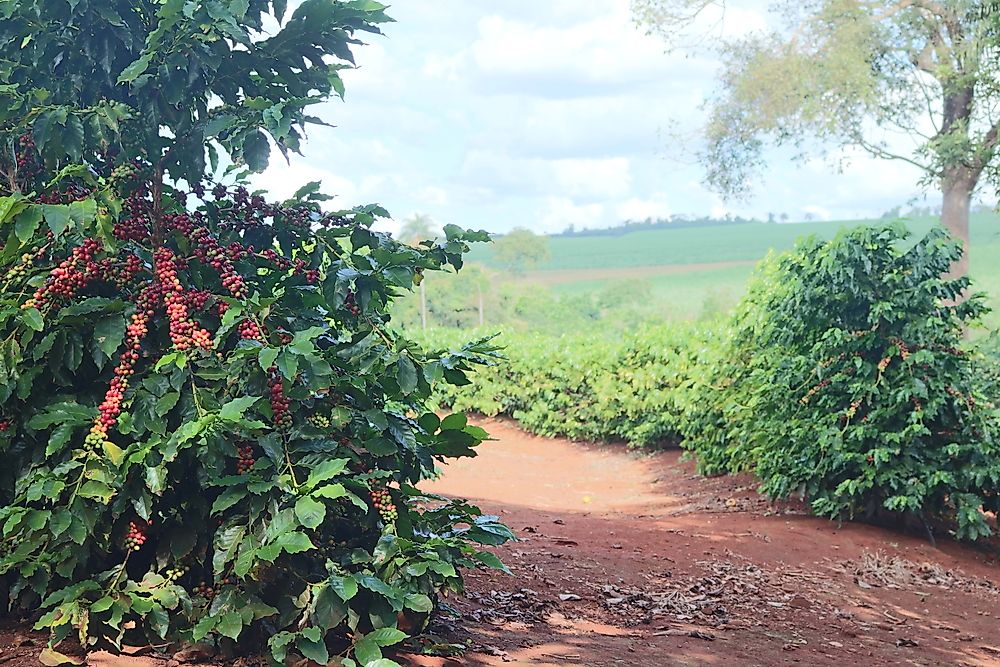Haiti's Economy: What Are The Biggest Industries In Haiti?

Haiti is a country on the island of Hispaniola in the Caribbean Sea. It is the second most populated country in the Caribbean with around 10 million people. In 2010, the country’s GDP (PPP) dropped by 8% to stand at $11.18 billion from $12.15 billion. GDP per capita on purchasing power parity in the country remained consistent at $1,200.
Although Haiti has a huge potential for tourism, the country is among the poorest nations in the Americas, facing new challenges such as high incidence of poverty, high levels of corruption, poor dilapidated infrastructure, lack of education, and limited health facilities. In 2010, the country experienced the worst earthquake in its history, which was subsequently followed by an outbreak of cholera and severely affected the trade in the country. According to the UN, Haiti ranks 145 out of 189 countries as per the Human Development Index.
Agriculture
For several years, agriculture has played a significant role in the economy of Haiti. In 1987, it employed about 66% of the countries workforce, contributed about 35% of the GDP, and accounted for about 24% of the country's total exports. The drop was a significant fall compared to 1950s when agriculture employed more than 80% of the country's workforce and contributed more than 50% of the GDP while accounting for about 90% of the country's total export. Over the subsequent years, the role of agriculture as a contributor to the economy has declined significantly because of factors such as increasing fragmentation of land ownership, poor and outdated agricultural practices, rural-urban migration, inadequate infrastructure, plant diseases, increasing population of livestock, high taxes on commodities, lack of capital investment, and insecure land tenure systems. For several years, the rural part of the country did not receive an investment either from the private sector or the government, and in 1989 only 5% of the country's budget was allocated to the Ministry of Agriculture. During the 1990s, the country was facing serious ecological challenges which significantly affected agriculture, and these were soil erosion, deforestation, natural disasters such as flooding, droughts, and others.yeah
Coffee has been the leading additional cash crop in Haiti, and for a long time, it was the leading agricultural export, particularly in the 1980s. Coffee production in Haiti has been declining since the country gained independence. The reason for the decline is believed to be excessive taxation and low prices of the raw coffee beans. Sugarcane is another important cash crop in Haiti.
Tourism
Tourism in Haiti is one of the most important industries in the country, and in 2012 there were just under 1 million tourists to the country. The industry is one of the major sources of the country's revenue, and Haiti has one of the longest coastlines in the Caribbean as well as one of the best climates. Other tourist attractions in the country include caves, waterfalls, unique cultural history, and colonial structures. However, one of the shortcomings is the unstable political system in the country which has also affected the economic development of the country for the most part of the 20th century. The tourism industry generated about $200 million in 2012 primarily from cruise ships.
Mining
Mining in Haiti plays a significant role in the overall economy, and in 2013, the industry generated $13 million. Some of the leading minerals in the country include copper, bauxite, gold calcium carbonate, and marble. Gold mining in the country has a long history, and it was widely mined by the Spanish during the colonial period.
Manufacturing
Some of the leading manufacturing industries in Haiti include cement, detergent manufacturing, butter, edible oils, textiles, soap making, sugar processing, and flour milling. The growth in manufacturing in Haiti has been slow because of the lack of capital investment. The country has been a beneficiary of grants from the US targeting the industry, but there has been a minimal success. The only subsector that has shown some prospects of growth has been the private construction and home building. In 2004, the manufacturing industry contributed about 20% of the country's GDP and employed slightly less than 10% of the country's labor force.











